Basic Information on Kyrgyzstan|What kind of country is it? Where is it located? What is the culture? Introduction of Kyrgyzstan
Hello everyone, Salamatosub! I am Sugiura, editor-in-chief of Ashu Travel, a travel agency specializing in Central Asia!
Why not leave the hustle and bustle of the city behind for a moment and dive into the charms of Kyrgyzstan, a country that is still little known? Here, nestled in the majestic Tien Shan Mountains and the sparkling waters of Lake Issyk Kul, you will find a natural paradise.
This is an easy-to-understand introduction to the language and culture of Kyrgyzstan for beginners so that you can enjoy your first trip to Kyrgyzstan with ease. If you are looking for a new experience and a chance to get to know the local people, you have come to the right place. Let’s go on a wonderful trip to Kyrgyzstan together!
What kind of country is the Kyrgyz Republic?
Kyrgyzstan is a hidden gem in Central Asia. It is neighbors with Kazakhstan to the north, Uzbekistan to the west, Tajikistan to the southwest, and China to the southeast.
Most of the country is spectacularly mountainous, with the Tien Shan Mountains rising majestically in the center. For this reason, Kyrgyzstan is truly a paradise for nature lovers. You can enjoy walking and outdoor leisure activities in the midst of beautiful landscapes.
Although there is no ocean, you can enjoy a beach resort atmosphere on the shores of warm Lake Issyk Kul. Summer is warm at about 30 degrees Celsius (86 degrees Fahrenheit), and visitors can enjoy relaxing in the mountains or playing in the water at the lake. In winter, snow flurries in the air, and skiing and snowboarding are great adventures!
In Kyrgyzstan, you will experience the warm hospitality and rich culture unique to Central Asia. In particular, the world’s longest epic poem, the “Epic of Manas,” is the pride of Kyrgyz culture, and its many landmarks and monuments offer a fascinating glimpse of the country.
Size and Population of the Kyrgyz Republic
- Size: 900 km from east to west and 410 km from north to south, with a total area of approximately 200,000 square kilometers.
- Population: approx. 6 million
- Capital: Bishkek
Languages of Kyrgyzstan
- Official language: Kyrgyz
- Official language: Russian
Russian is the dominant language in business and politics, but Kyrgyz is also widely spoken throughout the country. In some areas, Uzbek is also spoken, so the multilingual environment is attractive.
Kyrgyz uses a modified Cyrillic script and belongs to the Turkic language group. It is similar to Kazakh and Karakalpak, but slightly different from Turkish, Uzbek, Turkmen, and Uyghur.
Religion in Kyrgyzstan
- Muslims: approx. 80
- Orthodox: approx. 15
- Others: approx. 5%.
When we think of Islam, we tend to think of strict commandments, but in Kyrgyzstan the situation is a bit different.
Religious beliefs do not so much stiffly dominate daily life as they are a part of the culture and ethnic traditions. The Kyrgyz government has made a few tweaks to religious groups while maintaining a secular stance.
Kyrgyzstan’s State System
- State system: Unitary parliamentary republic
- Government agency: Parliament (Jogorku Kenesh)
- Head of Government: Prime Minister
- Head of state: president.
- Administrative divisions: 7 provinces (Batken, Osi, Jalalabad, Naryn, Issyk Kul, Chui, and Talas)
Currency of Kyrgyzstan
The currency is the Kyrgyz Som, and one Som is 100 Tiin. Banknotes are in circulation in denominations of 20, 50, 100, 200, 500, 1000, and 5000 som, and coins in denominations of 1, 3, 5, and 10 som.
Tijn is rarely used, but its uniquely designed banknotes and coins are attractive. They also make great commemorative items.
National Symbols
Flag: The design consists of a circle of the sun on a red background with 40 rays of light spreading out. The sun depicts the top of the Kyrgyz yurta (ger), “tunduk,” symbolizing family and the universe; the 40 rays of light represent the 40 ancient tribes of Kyrgyzstan. It is as if the sun is shining on the history of Kyrgyzstan.
National emblem: A hawk spreads its wings, symbolizing the land of Kyrgyzstan, the Tien Shan Mountains, and the rising sun. The pale blue color expresses courage and generosity. The hawk’s sharp eyes make us feel as if we are looking into the future of Kyrgyzstan.
What kind of city is Bishkek?
Bishkek is the capital of Kyrgyzstan, with a population of about 1 million. It is located in the northern foothills of the Ala-To Mountains, on the slopes of the Chui Valley, at an altitude of 700-900 meters.
It is chock full of museums, parks, and monuments where you can enjoy learning about Kyrgyz history and culture. There are many green oases, and time to relax in the vast botanical gardens. In addition, there are beautiful mountains within a two-hour drive, where you can recharge the power of nature by hiking.
Bishkek is an adventurous city where nature and culture go hand in hand!
From a mini-fortress to a big city at once! History of Bishkek
The origin of the Pishpek Fort was created in 1825. Its role was to protect the caravan route from Tashkent (Uzbekistan) through the Chui Valley to Lake Issyk Kul.
However, after a battle between the Russian imperial army and the conquerors of the Khokand kingdom, the fort was destroyed and became a frontier of the Russian empire; as of 1897, Pishpek was a small village with a population of only 6,600, but the city grew rapidly after the Soviet regime was established, and in 1926, a local revolutionary and soldier, M In 1926, the city was renamed after M.V. Frunze, a local revolutionary and soldier.
In 1991 the city reverted to its old name and took on its current name, Bishkek. The name comes from the stick used to stir the traditional drink “kumis.
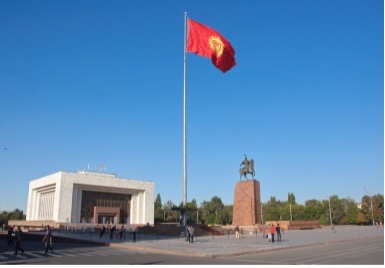
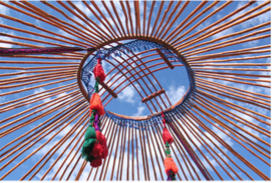
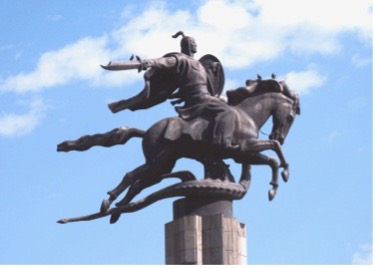
Bishkek Attractions
Soviet-meets-modern: The city offers a unique mix of Soviet-era architecture and modern buildings, such as the Philharmonic Theater, Government Building, History Museum, and Victory Monument. In the central square is the only remaining monument to V.I. Lenin in Central Asia.
At the same time, Bishkek is dotted with contemporary Kyrgyz architecture, including the Manas Monument, the Monument of Courage, poets and storytellers (manasti), and monuments to local rulers from different periods.
The scenery is an exquisite mix of historical and modern, and it feels like time travel!
Parks and Green Spaces: There are plenty of lush parks to keep you cool in the summer. There are also plenty of great spots for picnics and walks. It is like an oasis of nature.
Cultural Facilities: Popular museums include the History Museum, the Art Museum, and the M.V. Frunze Museum. The city is also known for its thriving arts scene, and posters abound in the city center, including the Opera and Ballet Theater, the Russian and Kyrgyz Theater, the Bishkek Municipal Drama Theater, and the T. Satirganov Memorial State Philharmonic Theater. There are plenty of places for art lovers!
Bishkek Attractions
- Botanical Garden: The garden extends over 124 hectares and is especially beautiful in spring and fall. It is perfect for picnics and walks, and you can enjoy the beauty of nature to the fullest. The scenery that changes with the seasons is like a painting!
- フィルハーモニー劇場: トクトグル・サトルガノフの名を冠した劇場で、素晴らしい音楽と芸術を楽しめます。音楽好きにはたまらないスポット。
- Brana Tower: An archaeological site for history buffs. It is full of secrets from the Silk Road period and offers a sense of exploration.
- Oak Park: An outdoor museum with 90 sculptures on display. Each season presents a different look, so it is fresh and new no matter how many times you visit. A collaboration of art and nature!
- Ala Archa Nature Reserve: 30 km from Bishkek, this is a spectacular spot with mountains, rivers and coniferous forests. You may see snow leopards and rare birds! It is like a natural adventure land!
botanical garden
The area around Bishkek is like a treasure chest of nature. It is home to the Ala Archa Nature Reserve, a small valley formed by mountains, rivers, coniferous forests, and canyons. 76 km of the Ala Archa River begins on the northern slopes of the Alatoh Mountains and flows through lush grasslands and fir forests.
In 1976, Kyrgyz National Park Ala-Archa was established to protect endangered species of flora and fauna and to develop tourism and mountaineering. Visitors have the chance to see unique animals such as snow leopards and the blue bird, known as the “bird of happiness!
Kyrgyz National Philharmonic
The white building of the Kyrgyz National Philharmonic, located on Chui Street in the center of the Kyrgyz capital, is surrounded by greenery and flowers. In front of the Philharmonic, there is a monument depicting the legendary hero Manas riding a horse and fighting a dragon with his sword. Bishkek residents and tourists enjoy walking along the tree-lined street surrounding the monument and enjoying the cool spray of the fountain, which sparkles in the sunlight.
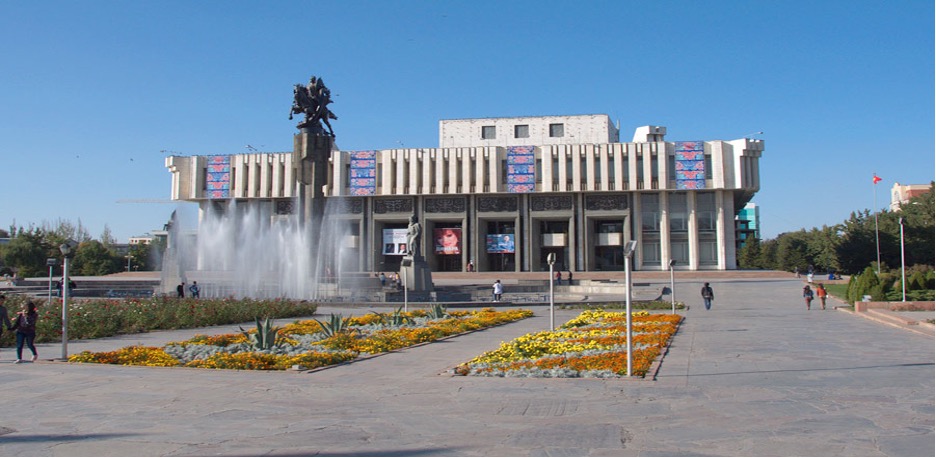
Toktogul S. Saturganov Kyrgyz National Philharmonic
The Kyrgyz National Philharmonic is named after the composer, renowned performer and poet Toktogul Sarytganov. Toktogul is known for preserving traditional Kyrgyz arts and as a master performer of the national epic, and is considered to be one of the founders of modern Kyrgyz literature. His contribution to Kyrgyz culture is immeasurable, and his influence is still strong today. In front of the Philharmonic stands a statue of the Kyrgyz hero Manas, and citizens and visitors alike can enjoy the sight of it and experience Kyrgyz culture.
Brana Tower
The Burana Tower, located about 80 kilometers from Bishkek, is one of the most famous archaeological sites in Kyrgyzstan.
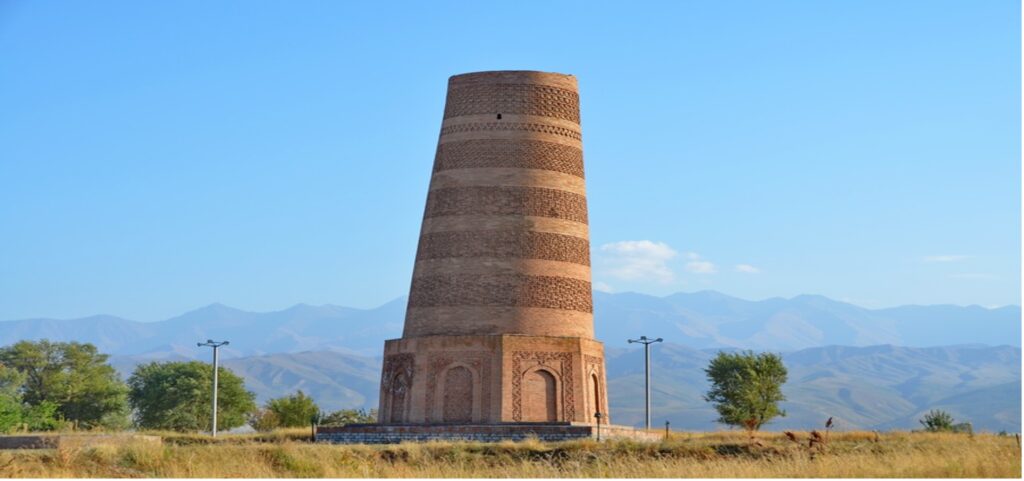
The important relics tell the story of Kyrgyzstan’s history and its role on the Silk Road. The Burhan Tower is a remnant of Balasgun, the capital of the Kara-Khanid dynasty in the 9th century. Evidence of the brick foundations of buildings has been found around the base of the tower, and archaeologists believe that the ancient city extended far beyond the tower, including shops, bazaars, baths and houses. Also near the tower you can see the Balbal, a small collection of stone statues. These small stone statues were made to commemorate the deceased and were sometimes placed at burial sites. These 6th century stone artifacts are complemented by rock paintings from the 2nd century BC that can be seen near the Burhan Tower. The museum attached to the tower is small, but it displays some interesting artifacts. Balasgun’s location on the Silk Road made it a center for merchants crossing the continent from east to west. Coins, pottery and other artifacts show the diversity of the region and its legendary history.
Oak Park
Oak Park is one of the oldest parks in Bishkek. It is home to an open-air sculpture museum and several important monuments and buildings. Despite the fact that the park was renamed in 2010 to honor Chinggis Aitmatov, it is still known by its old name to the residents and visitors of the capital.
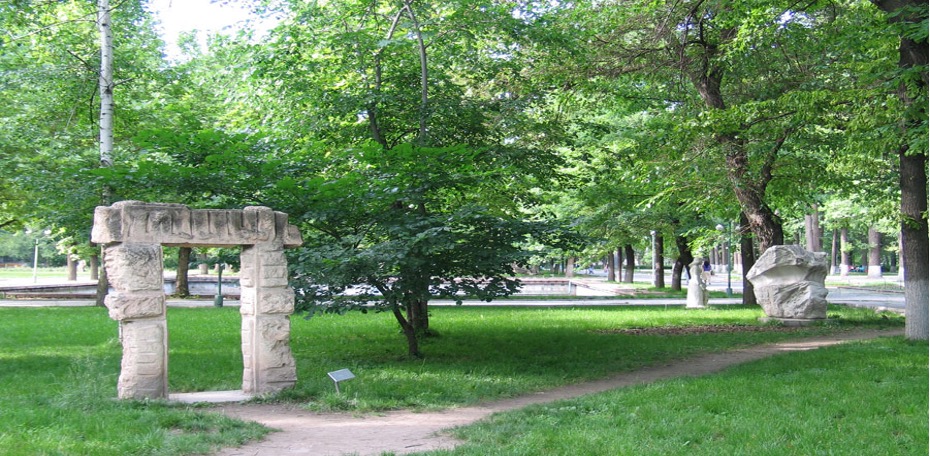
Most of the oaks in the park were planted at the same time as the city. The first trees were planted in 1890 by the famous Russian botanist Alexei Fetisov. The oaks have grown well, providing plenty of shade in the summer and colorful leaves in the autumn. The park is home to the Red Guards Memorial, the Russian Theater, and St. Nicholas Church, which used to have an attached museum.
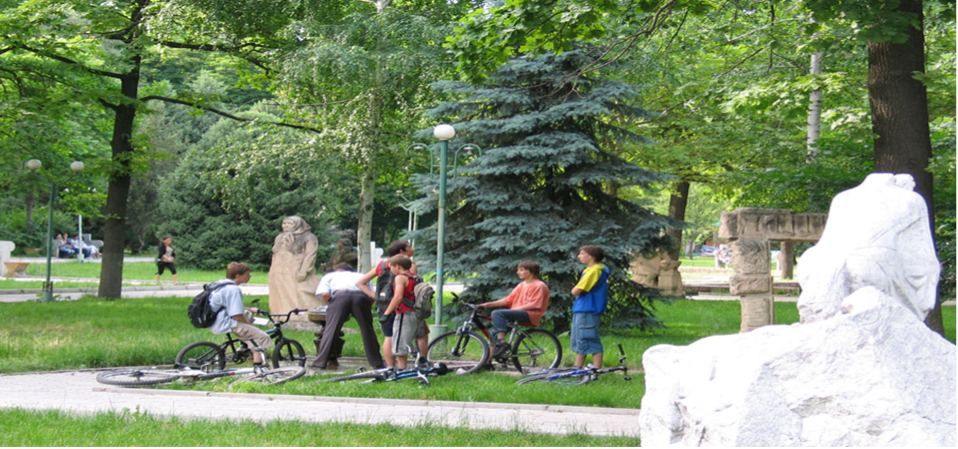
Visitors strolling through the park can enjoy the diverse sculptures. These sculptures appeared in 1984. At the time, a symposium of sculptors from all over the Soviet Union was held in Bishkek (formerly known as Frunze). Sculptors gathered from all over the Soviet Union to celebrate the 60th anniversary of the establishment of the Kyrgyz Autonomous Region, and exhibited their works on the theme of “Labor and Peace”. After the symposium, all the sculptures were left in the park, and over time, other works were added. The latest work to be added to the collection was the statue of Kurmagan Datka, which was added in 2004.
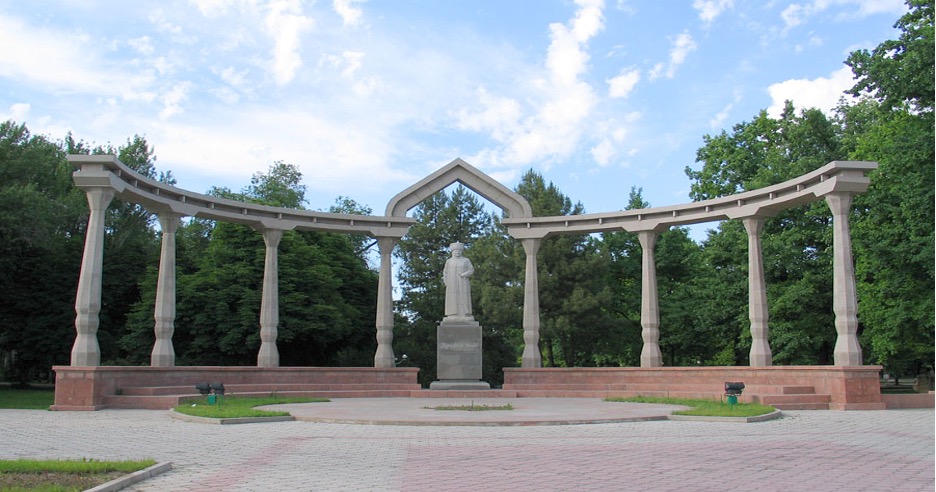
There are currently 90 sculptures on display at the Oak Park Outdoor Museum. The sculptures sometimes show different expressions depending on the passage of time, the season, or changes in the weather, making it a place that always has something new to offer each time you visit.
Ala-Archa Nature Reserve near Bishkek
One of the most visited places in Kyrgyzstan is the Ala-Archa Nature Reserve. Located 30km from Bishkek, this 20,000 hectare site is home to mountains, rivers and coniferous forests growing on the slopes of the mountains. These forests are the source of the reserve’s name, and “Ala-Archa” means “multicolored Archa”, which fully expresses the diversity of the coniferous and fir forests within the reserve. All visitors can experience the amazing flora and fauna of Kyrgyzstan.
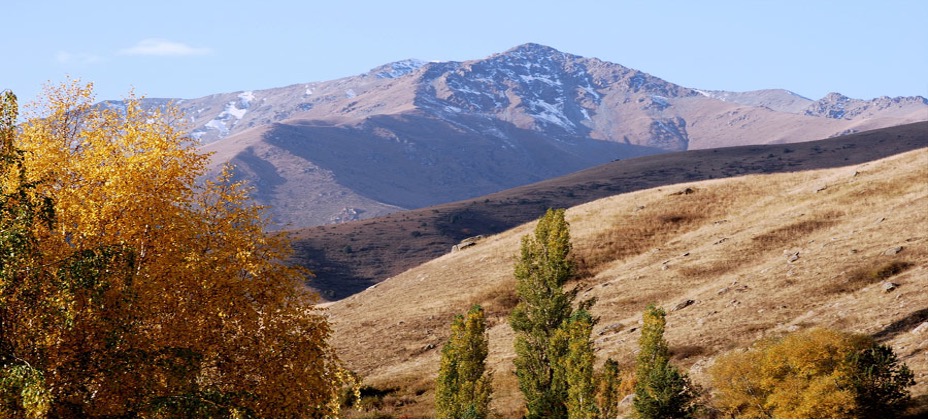
The reserve forms a small valley in the canyon, and the mountains are covered in permanent ice, with beautiful fir forests on the slopes. There are streams of meltwater from the glaciers, which later turn into the Ala Archa River.
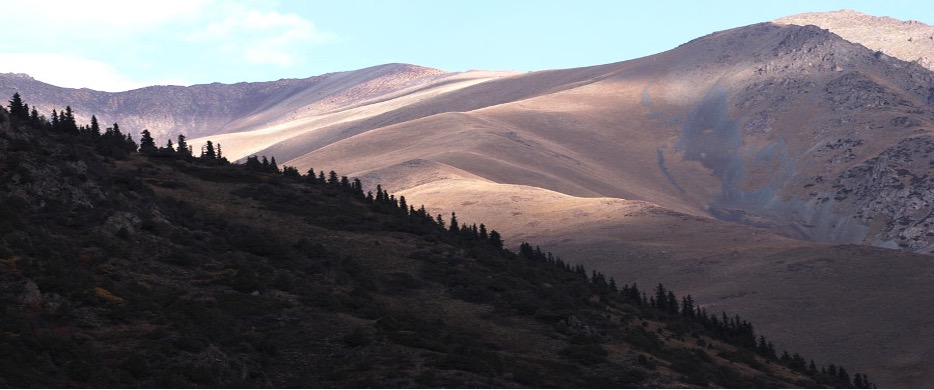
The Ala-Archa River is 76km long and begins as a glacier on the northern slope of the Ala-Too mountain range in Kyrgyzstan. The river has several tributaries, including Aksai, Topkarakay, Teketur, Toyuksu, Adygine and Jindisu. The river flows through the protected area, passing through slopes covered in lush meadows and fir forests. In 1976, the Ala-Archa Valley was designated as the Ala-Archa National Park of Kyrgyzstan, with the aim of protecting endangered plant and animal species and developing tourism and mountaineering.
One of the main attractions of the reserve is its unique fauna. Here you can see the snow leopard, which is listed in the Red Book, and the rare blue bird known as the “bird of happiness”, which lives in the high reaches of the valley. In addition, there are many other amazing plants and animals living in this reserve, where hunting is strictly prohibited.
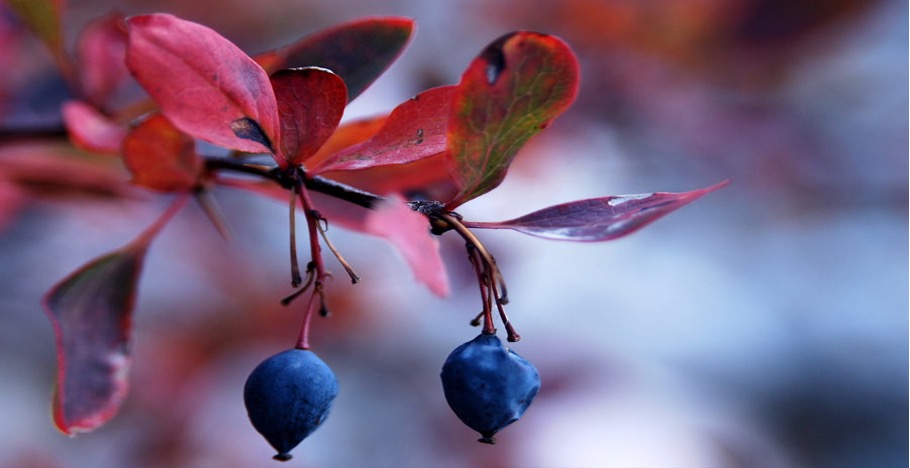
Another unique feature of the reserve is the mountaineers’ camp, which is located at an altitude of 2000m above sea level. The reserve includes the peaks of famous mountains such as Mount Semyonova-Tyan Shan (4875m) and Mount Korona (4860m). Mount Semyonova-Tyan Shan is the highest point in the entire mountain range. Climbers from all over the world gather here to attempt to reach the summit of this mountain.
Tour of Kyrgyzstan with the Sun

Tours to Kyrgyzstan offer adventure in a country rich in beautiful natural attractions. 94% of Kyrgyzstan’s area is covered by the Tian Shan and Pamir mountain ranges, and these regions attract tourists with a diverse range of programs, including horse tours (Torpaldash), rafting on the Chu River, bicycle tours along the shores of Lake Song Kol, and trekking in the Tian Shan mountains. Lake Issyk-Kul, the second largest salt lake in the world after the Caspian Sea, attracts visitors with its summer and winter recreation. Tours in Kyrgyzstan allow you to experience the unique national traditions and customs of the nomadic people, which have been formed over the centuries.
Group Tour
If you want to see the cities and tourist attractions of Kyrgyzstan with tourists from around the world, joining a group tour is the best option.
Cultural Tour
Visit Kyrgyzstan in summer or autumn and enjoy its vivid nature and cultural events. This includes visiting beautiful places, having picnics, hunting, and resting on the shores of Lake Issyk-Kul.
Central Asia Combined Tour
A combined tour of Central Asia is a trip that allows you to experience the nature, culture and architecture of Uzbekistan, Kyrgyzstan, Kazakhstan, Turkmenistan and Tajikistan all at once.
Hiking Tour
Please enjoy the fascinating hiking tours that take you through the nature of Kyrgyzstan. If you like mountain hiking and the beauty of unspoiled nature, then a trekking tour in Kyrgyzstan is perfect for you.
Tour on horseback
On a tour of Kyrgyzstan by horse, you can follow the path of the nomads and experience their way of life and culture. You can also stay in a yurt in Kyrgyzstan and try local cuisine and kumis (a fermented horse milk drink).
Rafting tour
There are over 40,000 rivers and streams in Kyrgyzstan, many of which are suitable for rafting. You can experience the power of nature on the rapids of the Chu River, the Kekemeren River, the Chong Kemin River, and other rivers.
One-day tour
There are day trip programs that take you to all the beautiful corners of Kyrgyzstan. There are also special sightseeing tours for those who want to explore Bishkek.
Tour of Kyrgyzstan: Turgart and Irkeshtam
These tours include a program to visit tourist destinations near the border between Kyrgyzstan and China, and it is also possible to continue traveling in China after the tour is over.
Silk Road Tour
We offer tours that follow the Silk Road route through Kyrgyzstan, Uzbekistan, Kazakhstan and China. You can visit cities along the caravan route and experience the culture and lifestyle of each country.
Corporate Tour
Corporate or team building tours are a great way to boost company morale, bring teams together and have a good time. Try out the corporate tour options prepared by Advantour.
Ski Tour
Kyrgyzstan is a mountainous country. Where there are mountains, there are always places to enjoy skiing and snowboarding. We propose wonderful ski trips to the best resorts in Karakol and Suzhumul. There is also the opportunity to participate in heli-skiing.
Mountain Tour
A tour to the peaks of the Kyrgyz mountains is an attractive journey where you can see the highest peaks of the Tian Shan and Pamir mountain ranges, Lenin Peak, Victory Peak, and Khan Tengri Peak.
Bicycle Tour
Let’s go on a vivid journey around the mountains of Kyrgyzstan by bicycle. There are beautiful mountain passes to climb and fast descents into flower-filled valleys to ride down.
Active Tour
Active tours in Kyrgyzstan offer opportunities to ski, trek along various routes, go white-water rafting, and travel by horse or bicycle. Enjoy the full appeal of an active vacation!
List of documents related to the cuisine of Kyrgyzstan and Bishkek
There are also resources available to help you gain a deeper understanding of the delicious cuisine and culture.
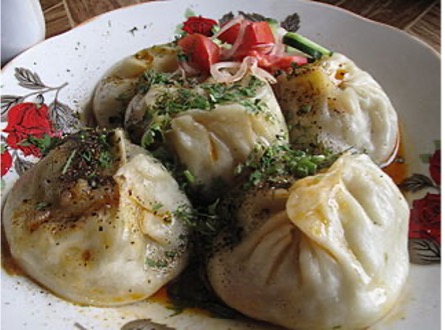
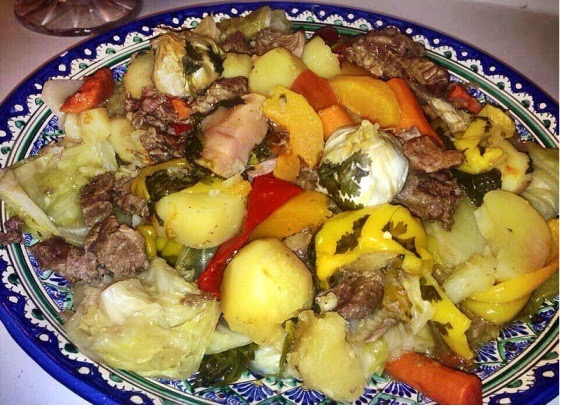
Kyrgyz cuisine traditions
- Cookbook of traditional recipes: Through diversification of food, we aim to strengthen traditional culinary knowledge in Kyrgyzstan and improve nutrition. – B.2019.
- Ibragimova S. Sh. Modern Kyrgyz cuisine. – Frunze: Kyrgyz Soviet Encyclopedia Editorial Board, 1991.
- Borbaev T. Kyrgyz cuisine. – Frunze: Kyrgyzstan, 1982
- Malafeev J. M. Bishkek – the capital of Kyrgyzstan. – B.: 2001
- Pishpek – Frunze – Bishkek – 140. Photo collection. – B.: 2018
- Pishpek – Frunze – Bishkek: Stages of historical development. – B.: 2003
Prominent people of Kyrgyzstan
The middle of the 19th century was a difficult time for the people of Kyrgyzstan. It was during this time that prominent leaders such as Olmon Khan, Alimbek Dattka and Borombai emerged. Their great achievements and events are depicted on Kyrgyz banknotes. Their memory also lives on in the hearts of the people, and is passed down through history.
The Kyrgyz Som banknotes introduced in 1993 feature the composer Abdiras Mirdibayev, the ballerina Bubisara Bayshenalieva, the poet Kasym Tynystanov and others. Historical figures and people who have made cultural achievements also appear, and Toktogul Satylganov symbolizes the pinnacle of Kyrgyz epic culture with his art. Suu-Mynkyr Chokmorov is depicted on the 5,000 som banknote, and he has become a symbol of the Kyrgyz era.
Genghis Aitmatov
Chingiz Aitmatov (1928-2008) was a famous Kyrgyz and Russian writer and screenwriter. He is known as a master of Soviet “magical realism”, and his works such as “Prague”, “Days until the End of the World” and “The White Train” are considered classics of 20th century domestic literature. His works have been translated into 157 languages, and according to UNESCO, he is one of the most read writers of the modern era. His masterpiece “Jamila” was published in 1958 and tells the story of a young woman who chooses love over patriarchal convention.
Kyrgyz culture and traditions
Kyrgyz culture has been strongly influenced by nomadic life, and while it has also been influenced by Russian, Persian and Turkish cultures, it still retains its own unique charm. The connection with nature can be seen in all aspects of the culture, and in particular, the “Manas” epic is an important cultural asset that has been passed down from generation to generation.
The people of Kyrgyz live in close contact with nature, and their houses and clothes are adapted to the changing climate. Yurts are easy to assemble and move, and they can keep you warm in winter and cool in summer. In addition, horses are a symbol of Kyrgyz culture, and they play an important role in transportation, war, and food culture.
Kyrgyz culture is a source of national pride, and many events are held every year to preserve and promote tradition. Visitors can stay with a local family and have a wonderful experience of getting to know Kyrgyz traditions and culture.
“The Kyrgyz Epic ‘Manas’”
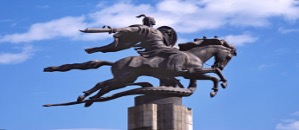
The “Epic of Manas” is the most famous work of Kyrgyz culture and is probably the longest epic poem in the world. It is twenty times longer than the Odyssey and tells the story of the life of the warrior Manas and the adventures of his sons and grandsons. This story has been preserved and passed down through the generations by epic storytellers known as “manaschi”. It was written down in the 1800s, and the first complete version was published in the 1920s. “Manas” has been translated into many languages and published in the Soviet Union and abroad.
Yurt (nomadic people’s mobile residence) in Kyrgyzstan
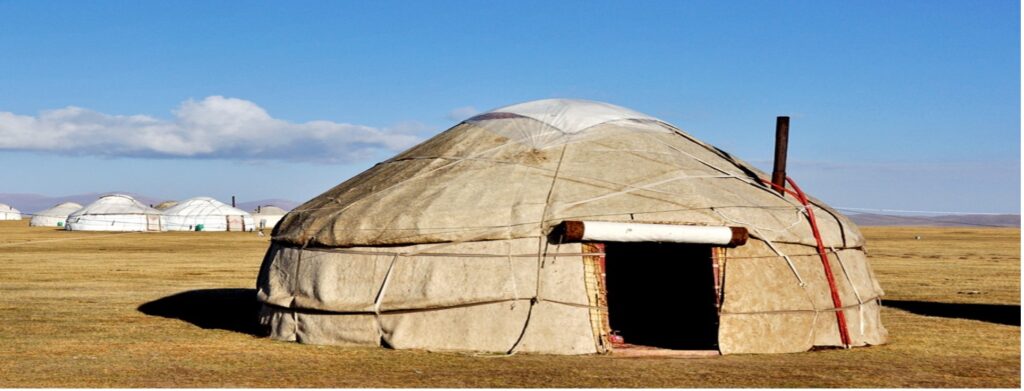
The yurt (a tent used by nomadic people) is one of the most important elements of Kyrgyz culture, and it has a meaning that goes beyond just being a place to live. The yurt symbolizes family, land and the universe, and it covers all stages of life from birth to death. The culture associated with the yurt is rich and includes important ceremonies and festivals, handicrafts and traditional skills.
The yurt in Kyrgyzstan is made from birch branches that form a dome-shaped structure tied to a lattice that forms the vertical walls. The outside is made of felt and wool, and these warm, waterproof materials are also easy to repair. In the center of the dome of the yurt is a lattice circle called a “tunduk”, which is one of the important symbols of the family and the universe.
Kyrgyz textiles
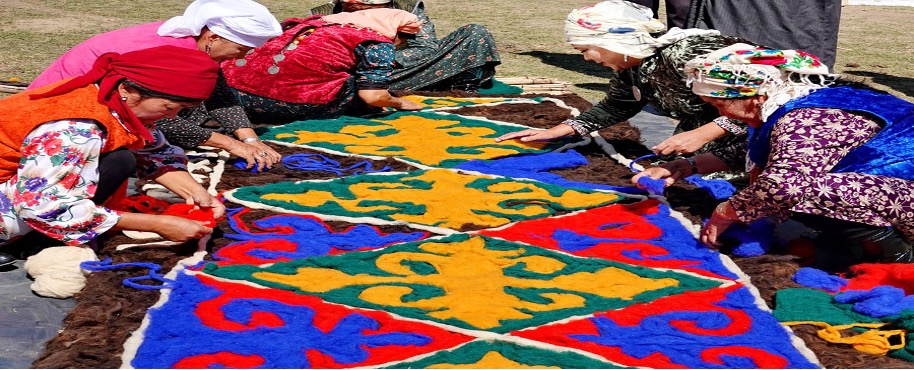
Kyrgyz textiles are characterized by designs inspired by nature, and are made from materials that are easily available in and around the mountains. Felt and wool are particularly common, and many motifs depict the mountains, rivers, plants and animals of Kyrgyzstan.
Kyrgyz music
Kyrgyz music is distinctive in that it depicts life in nature and the mountains. Many of the lyrics convey the daily lives of nomads, and even in songs that do not have lyrics, the atmosphere and emotions are skillfully expressed. There are many traditional musical instruments in Kyrgyzstan.
- Komuz: A symbolic musical instrument of Kyrgyzstan, it is a small guitar-like instrument with three strings.
- Kulu Kuyak (Kuyak): A stringed instrument played with a bow.
- Temir Komuz: A mouth harp-type instrument played with a pick.
- Chopo Choll: An ancient wind instrument, the player blows into it and adjusts the sound by pressing the holes with their fingers. The tone is deep, and the low notes have a nasal sound.
Theater in Kyrgyzstan
In Kyrgyzstan, theaters and art schools are highly regarded and are very active. Students learn dance, acting, music, and direction, and performances are held regularly. The Kyrgyz National Opera and Ballet Theater was established in 1926 as an educational theater, and the current theater building was built in 1955. Even now, performances are held regularly.
Literature of Kyrgyzstan
Kyrgyz literature has developed and spread over the centuries, but because the main way of life was nomadic, written records were not necessarily kept. In the past, most people were unable to read or write, so poets (akyns) would travel from village to village reciting their own works. For example, works such as the “Epic of Manas” were passed down orally by specific storytellers (manaschi). During the Soviet era, school education became more widespread, and from the 20th century, many writers, poets and linguists emerged in Kyrgyzstan, and their works became known around the world.
Kyrgyz clothing
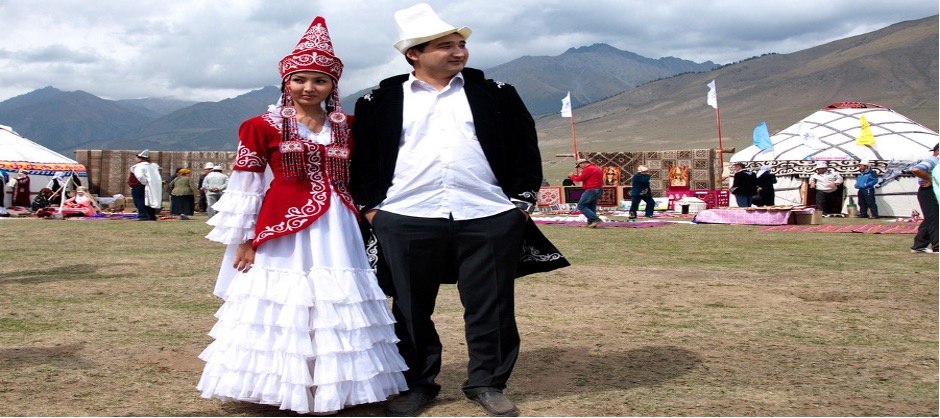
The traditional clothing of Kyrgyzstan reflects the nomadic lifestyle and shows regional characteristics. Natural materials such as wool, felt, leather and coarse cloth are mainly used, and the designs use patterns and themes inspired by nature and tribal traditions. Although modern Western clothing is common in Kyrgyzstan today, traditional elements are also incorporated, and the people of Kyrgyzstan take pride in this tradition.
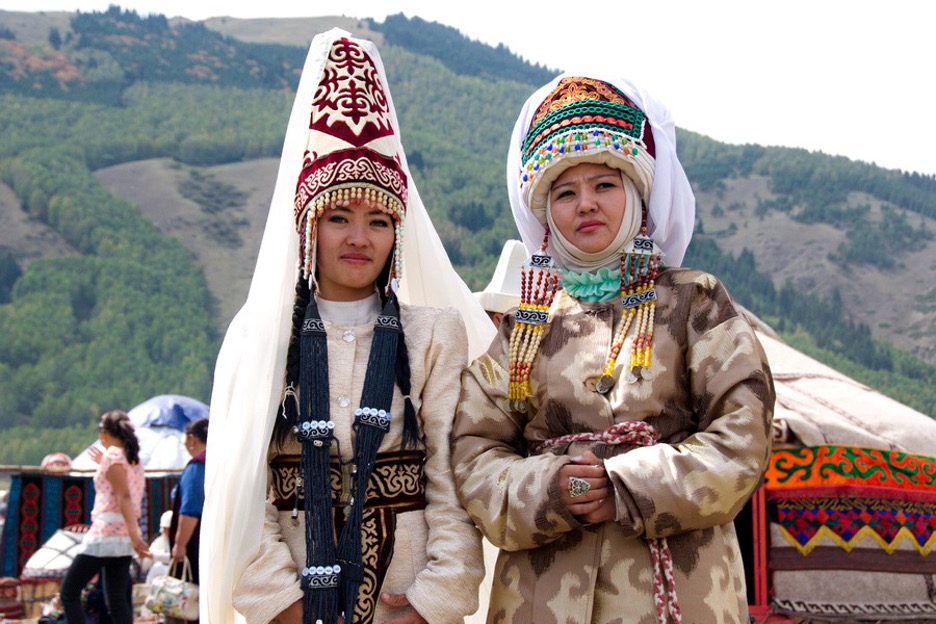

sugiura
A 40-something editor who loves the outdoors. Wanders around Japan and abroad in search of unique experiences. Longing for a digital detox, she goes on a trip, but in the end, she can't give up her computer, which is a problem.
[Save this page] Emergency contact list for traveling in Kyrgyzstan! A reliable guide to avoiding trouble
The Mysterious Tower of the Silk Road! Introducing the appeal of Kyrgyzstan’s World Heritage Site, the Burana Tower, and how to get there.
Are prices in Kyrgyzstan cheap? A hidden travel destination that you can enjoy even when the yen is weak [2025]
- Guesthouse in Kyrgyzstan
- Kyrgyz culture
- Kyrgyz horse riding
- Kyrgyzstan
- Kyrgyzstan Food
- Kyrgyzstan Security
- Kyrgyzstan Souvenirs
- Kyrgyzstan Tourism
- Kyrgyzstan Transportation
- News
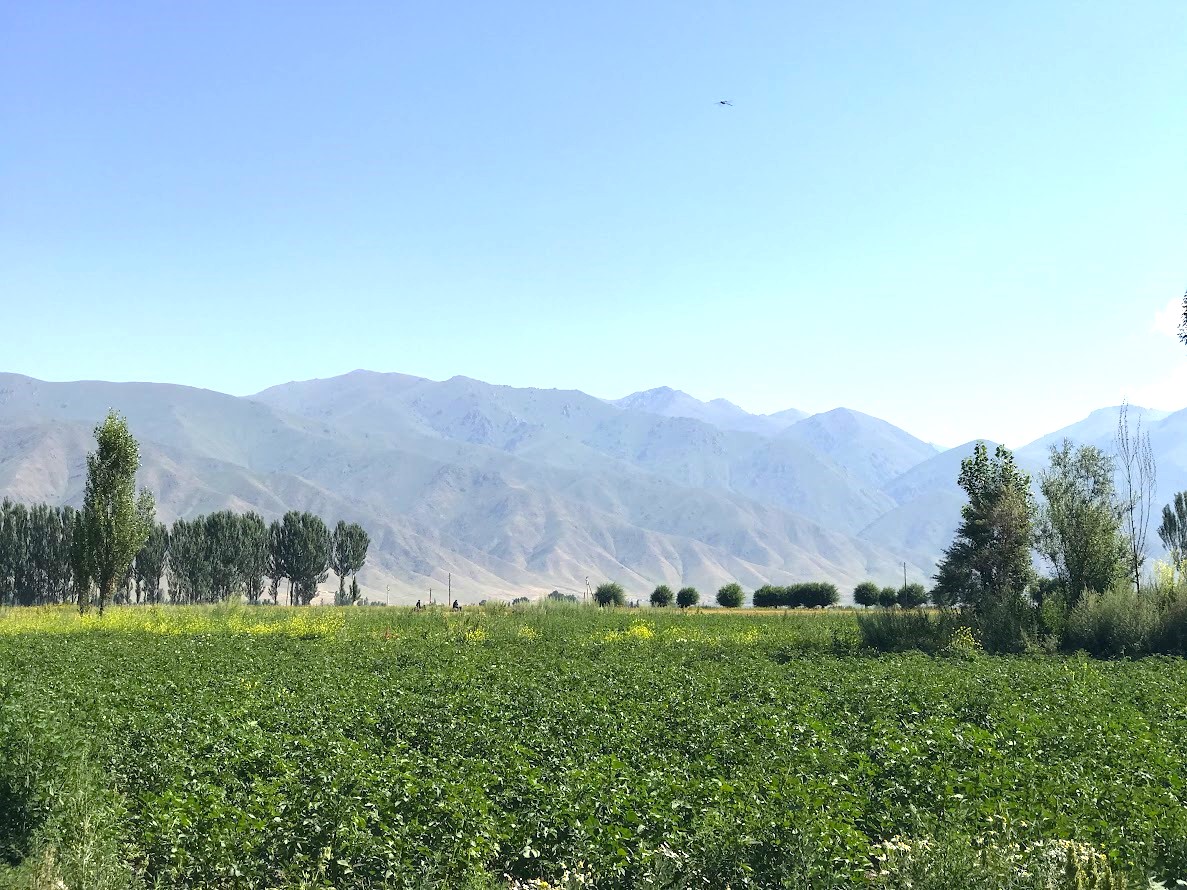
[Recommended for beginners to Kyrgyzstan] 1 night 2 days $240 ~ Cheap & fulfilling Silk Road sightseeing and horse riding experience tour
Tour Price (per person)
$250〜$520

Unforgettable Kyrgyzstan Horseback Adventure & UNESCO Heritage | 5-Day Issyk-Kul & Chong-Kemin Tour with Manas Airport Pickup
Tour Price (per person)
$870〜$2940
